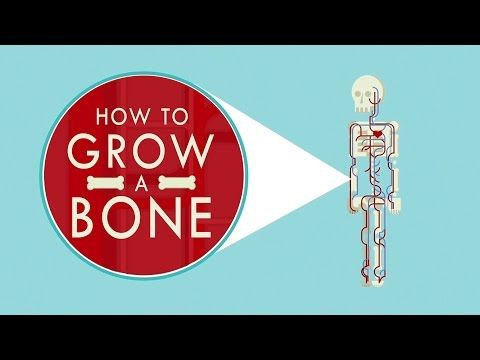Stem Cells, Cow Bones, And Other Materials May Soon Be Combined In A Bioreactor To Grow Human Bones

Bone loss, facial fractures, and genetic defects may be treated in the future by using your own bones. In a TED-Ed video, Nina Tandon, a tissue engineering researcher and CEO of New York City-based company EpiBone, explains that growing your own bones is possible by regenerating a person’s own multi-potent stem cells, a process that may save many lives.
Bones have the ability to reconstruct, but there are certain situations like cancer removal, traumatic accidents, and genetic defects that can exceed the body’s natural ability for repair. In the U.S., there are more than 900,000 allografts, bone or soft tissue transplants, performed, according to the Musculoskeletal Transplant Foundation. These allografts are done either with the patient’s own tissue, requiring two surgeries, or with synthetic or donated material such as metal or animal bones, which the patient’s body sometimes rejects.
Tandon and her colleagues suggest the solution to these problems may lie within simply viewing the body as a renewable resource of stem cells that can regenerate new parts as needed. Growing a bone made from a patient’s own cells that’s customizable to the exact shape of the hole may be possible by first extracting stem cells from a patient’s fat tissue, followed by CT scans to determine the exact dimensions of the missing bone.
Surgeons would then model the exact shape of the hole by either using 3D printers or by carving decellurized cow bones. The cells of these cow bones have been stripped away and only contain a sponge-like mineral lattice. The patient’s stem cells would then be added to the lattice and placed in the bioreactor — a device that will simulate all of the conditions found inside the body.
In order for this part of the process to be successful, temperature, humidity, acidity, and nutrient composition need to be exact for the stem cells to differentiate into osteoblasts — specialized bone-forming cells that deposit more mineral, giving bones their strength — and other cells. The mineral lattice is then colonized and remodeled with living tissue. Lastly, to avoid the artificial bone from coming out weak and brittle, the bioreactor constantly pumps fluid throughout the bone as the pressure tells the osteoblasts to add more density.
According to Tandon, within three weeks, the living bone is ready to come out of the bioreactor and be implanted into the patient’s body.
Tandon’s idea has already been successful on animals. Back in March, Epibone conducted a study that involved implanting grown cheekbones into 16 pigs at Louisiana State University School of Veterinary Medicine. Tandon and her colleagues chose pigs because they have a very similar-sized head to humans and use the bone (temporomandibular) in a similar way.
Due to the success of lab-grown bones implanted in pigs and other animals, Tandon says human trials may begin as soon as 2016.



























